Introduction
are quinol-dependent transmembrane (Fig. 1) terminal oxidases found exclusively in prokaryotes.[1][2] With a very high oxygen affinity, bd oxidases play a vital role in the oxidative phosphorylation pathway in both gram-positive and gram-negative bacteria. Cytochrome bd oxidase's responsibility in the oxidative phosphorylation pathway also allows it to act as a key survival factor in the bacterial stress response against antibacterial drugs,[2] hypoxia, cyanide, nitric oxide, and H2O2.[3] With their essential roles in bacterial survival, bd oxidases have been pursued as ideal targets for antimicrobial drug development. [4]
![Figure 1. Cartoon model of cytochrome bd-oxidase in E. coli. Dashed lines represent borders of cytoplasmic and periplasmic regions. A quinol bound in the periplasmic jmolSetTarget('1');jmolLink('delete $clickGreenLinkEcho; refresh;setL = \"setLoading();\"; javascript @setL; script /wiki/extensions/Proteopedia/spt/wipeFullLoadButton.spt; ~green = \"Q-loop\"; isosurface DELETE; scn = load(\"/wiki/scripts/83/832924/Q_loop/3.spt\"); scn = scn.replace(\'# initialize;\', \'# initialize;\nclearSceneScaleCmd = \"clearSceneScale();\"; javascript @clearSceneScaleCmd;\n\'); scn = scn.replace(\'_setSelectionState;\', \'_setSelectionState; message Scene_finished;\'); scn = scn.replace(\'_setState;\', \'_setState; setButtonsStartingState();\'); scn = scn.replace(\'DORESIZE\', \'\'); script inline scn;','Q-loop','Q-loop'); is oxidized and releases protons into the periplasmic space, generating a proton gradient. Protons and oxygen atoms from the cytoplasmic side enter cytochrome bd oxidase through specific channels. Oxygen is reduced to water, which is released into the cytoplasmic space. Blue = CydA; green = CydB; yellow = CydX; pink = CydS. [PDB: 6RX4]](/wiki/images/thumb/c/c9/Transmembrane_bd_ox.png/550px-Transmembrane_bd_ox.png)
Figure 1. Cartoon model of cytochrome bd-oxidase in
E. coli. Dashed lines represent borders of
cytoplasmic and
periplasmic regions. A quinol bound in the periplasmic is
oxidized and releases protons into the periplasmic space, generating a
proton gradient. Protons and oxygen atoms from the cytoplasmic side enter cytochrome
bd oxidase through specific channels. Oxygen is
reduced to water, which is released into the cytoplasmic space. Blue = CydA; green = CydB; yellow = CydX; pink = CydS. [
PDB: 6RX4]
The overall mechanism of bd oxidases involves an exergonic reduction of molecular oxygen into water (Fig. 2). During this reaction, a proton gradient is generated in order to assist in the conservation of energy. [5] Unlike other terminal oxidases, bd oxidases do not use a proton pump. Instead, bd oxidases use a form of vectorial chemistry that releases protons from the quinol oxidation into the positive, periplasmic side of the membrane. Protons that are required for the water formation are then consumed from the negative, cytoplasmic side of the membrane, thus creating the proton gradient.
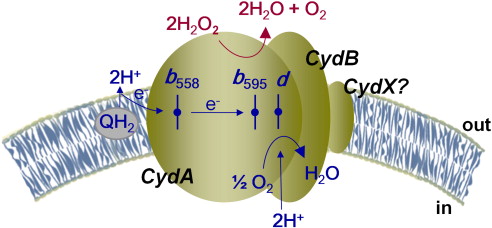
Figure 2. Overall schematic representation of the reductive cycle of cytochrome bd oxidase.
[6] In this cycle, molecular oxygen is reduced into water using the quinol as a reducing substrate. Cytochrome
bd oxidase releases 2 H
+ for each 2 electrons transferred due to the menaquinol oxidation site located on the outer face of the cytoplasmic membrane.
[7] The
bd oxidase completes a redox loop when coupled with quinone
dehydrogenases that receive electrons from
NADH,
pyruvate,
D-lactate, or
acyl coenzyme A. The three hemes essential to the electron transfer are located near the periplasmic space. Heme b
558 is involved in quinol oxidation and heme d serves as the site where O
2 binds and becomes reduced to H
2O. The membrane potential is generated mainly from proton transfer from the cytoplasm towards the active site on the periplasmic side of the membrane.
Recently, the structures of
bd oxidases from
E. coli and
G. thermodenitrificans were determined by cryoelectron microscopy. Although similar in overall structure, key structural differences emerge that control the relative biological roles of these two
bd oxidases. On this page, we will present the basic structural features of each of these
bd oxidases and then compare their structures and functions.
bd oxidase Geobacillus thermodenitrificans
G. thermodenitrificans is a facultative aerobic thermophilic bacterium that utilizes the bd oxidase mechanism ( bd oxidase Geobacillus thermodenitrificans). The oxygen enters the enzyme through the selective that funnels the extracellular oxygen to in the active site. The electrons for the reaction are provided by a ubiquinone molecule bound to the . The protons for the reaction are provided by one of two , either the or . Both of the proton pathways utilize the intracellular water molecules for the proton source, and shuttle them to .
The G. thermodenitrificans contains that are arranged in a nearly oval shape.[1] The protein contains two structurally similar subunits, , seen in blue, and , seen in red, each containing nine helices, and one smaller subunit, , in teal, with one transmembrane helix. These subunits interact using hydrophobic residues and symmetry at the interfaces. The CydX subunit, whose function is not currently known, is positioned in the same way as CydS, a separate subunit that is found in the bd oxidase homologue from E. coli bd oxidase, but is not found in G. thermodenitrificans. Due to its similar structure and position to CydS, CydX has been hypothesized to potentially stabilize during potential structural rearrangements of the Q loop upon binding and oxidation of ubiquinone (Figure 1), the function of CydS in E. coli.[2] The is a hydrophilic region above Cyd A. The lack of hydrogen bonding in this hydrophobic protein allows the protein to be flexible and go through a large conformational change for reduction of dioxygen. is mostly involved in the proton pathway, and is involved with the oxygen pathway.
Structure
Active Site
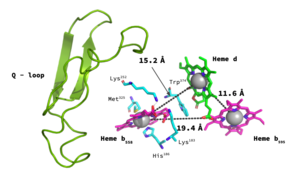
Figure 1. The active site of bd oxidase for
G. thermodenitrificans. Heme B558 (pink; left), Heme B595 (pink; right), and Heme D (green). Important residues shown in blue. Measurements are shown in Å.
The active site for bd oxidase in G. thermodenitrificans is located in subunit Cyd A. The site consists of three iron hemes: , , and that are held together in a rigid triangular due to Van der Waals interactions.[1] The between each heme's central iron is relatively constant which serves to shuttle protons and electrons from one heme to another efficiently (Figure 1). is hypothesized to act as an electron acceptor, orientated toward the extracellular side by (Figure 1).[1] With closest in proximity to the intracellular side, Heme B595 is likely the proton acceptor with two potential proton pathways. Both and then shuttle their respective ions directly to as this is the shortest pathway.
Potential Oxygen Entry Site
is the hypothesized spot for the to enter the protein. Heme D (shown in green) is directly connected to the protein surface on CydA and contains a solvent accessible substrate channel. This channel and accessibility allow for oxygen to easily bind to Heme D and eventually be reduced to two H₂O molecules. This process requires a proton and electron source, both described in the later sections.
Electron Source
An electron source is needed in order for the redox reaction of O₂ to occur. Cytochrome bd oxidase uses the quinol molecule
ubiquinone as an electron donor (Figure 2).
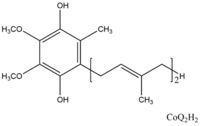
Figure 2. Chemical structure of ubiquinone.
As shown in the , the is on the extracellular surface and provides a binding site for ubiquinone.
[1] Heme and thus is the suggested
electron acceptor. This suggestion is further supported by the often found as intermediate electron receptors in biological
electron transfer chains.
[1]
Potential Proton Pathways
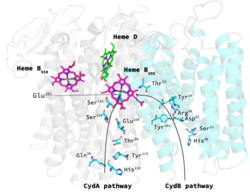
Figure 3. Two potential sources of protons: CydA and CydB pathway.
Because there is no proton pump present, the proton transfer mechanism is facilitated by via intracellular water molecules.
One potential proton pathway is formed from the of . It is called the . The residues along this pathway help facilitate the movement of the protons. The location and negative charge characteristic of , together with previous mutagenesis experiments, supports the proposal that this glutamate residue is a redox state-dependent mediator of proton transfer to a charge compensation site. In other words, it acts like a proton shuttle.[1] The , which is the last residue in this pathway, could be the protonatable group eventually used upon reduction. More research needs to be done to determine whether the CydA pathway is solely providing protons for charge compensation, or whether can be a branching point that is able to pass protons via the propionates to the oxygen-binding site.[1]
Another potential entry site is close to the of and is referred to as the . In this pathway, is thought to be the equivalent of the in the CydA pathway.[1] The other residues help facilitate the movement of the proton very similarly to the . The is the most accepted source of protons as less is known about the .
Overall Oxygen Reduction Mechanism in G. thermodenitrificans
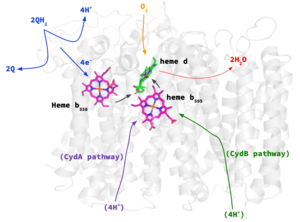
Figure 4. Overall oxidation-reduction mechanism summary.
As mentioned above, the purpose of the bd oxidase is to reduce O₂ to 2H₂O using quinol as the reducing substrate, yielding the overall reaction of O₂ + 4H+ + 4e- → 2H₂O. The oxygen comes from the extracellular side of the protein, and enters through the to . This pathway is depicted in orange in Figure 4.
The electrons required for the reduction mechanism come from a ubiquinol molecule (Figure 2) that simultaneously binds to the and gets oxidized giving 4e- to . Once at , the 4e- will be shuttled directly to to be used in the reaction. The electron pathway is depicted in blue in Figure 4.
The protons that are required in the pathway are not provided by a pump, but rather via intracellular water. The utilize amino acids with properties that help shuttle the protons from the intracellular side of the protein to in the active site. The passes through the , shown in purple in Figure 4. The proceeds through the , shown in green in Figure 4.
When all of these elements of the reduction reaction aggregate in the active site at their respective hemes, the protons and electrons are shuttled to , where the actual reduction occurs. The 2H₂O molecules are then expelled from , shown in red in Figure 4. The shuttling of these electrons and protons also helps assist with creating the electric chemical potential in the cellular membrane.
bd oxidase Escherichia coli
bd oxidase from E. coli is part of the long(L) quinol-binding domain subfamily of terminal oxidases ( bd oxidase Escherichia coli). The L-subfamily of bd oxidases are responsible for the survival of acute infectious pathogens such as E. coli and Salmonella. The cytochrome bd oxidase's three groups, its periplasmically exposed , and will be the primary focus when explaining how the structure of bd oxidase allows it to catalyze the reduction of molecular oxygen into water and how the structure of the E. coli bd oxidase differs from G. thermodenitrificans bd oxidase.
Structure
Subunits
E. coli cytochrome is made up of four individual subunits.[8] The two major subunits, CydA and CydB, are each composed of one peripheral helix and two bundles of four transmembrane helices. The plays the most important role in the oxygen reduction reaction as it contains the Q-loop as well as all three heme groups. The harbors the molecule which provides structural support to the subunit that mimics the three hemes found in CydA.[2][1] The remaining two subunits, CydS and CydX, are both single helix structures that assist in the oxygen reduction reaction. Unique to E. coli, the binds to CydA to block oxygen from directly binding to heme b595. The promotes the assembly and stability of the oxidase complex. CydX is composed of 37 mostly hydrophilic amino acid residues, including that is exposed to the cytoplasm and prevents the helix from fully entering the membrane. [8]
Q-Loop
Another significant structural feature of E. coli bd oxidase is the which is located between TM helices 6 and 7 of the CydA subunit.[8] The periplasmic Q-loop in E. coli stretches over a length of 136 amino acid residues, making it much longer than the Q-loop in G. thermodenitrificans.[1] With five helices acting as a flap to cover heme b558, the Q-loop is likely involved in quinol binding and oxidation. The of this Q-loop is very flexible and likely functions as the hinge that allows for quinone binding while the is much more rigid which provides stabilization for the enzyme.[8]
Molecular Function
H and O channels
![Figure 3. H and O-channels of cytochrome bd-oxidase in E. coli. Channels are outlined in gray, water is shown as spheres, and relevant amino acids are labeled above. [PDB:6RX4]](/wiki/images/thumb/8/82/O_AND_H_CHANNEL.png/300px-O_AND_H_CHANNEL.png)
Figure 3. H and O-channels of cytochrome bd-oxidase in
E. coli. Channels are outlined in gray, water is shown as spheres, and relevant amino acids are labeled above. [
PDB:6RX4]
The hydrogen and oxygen channels (Fig. 3) are essential for H+ and O2 molecules to reach the active site of cytochrome bd oxidase. A proton motive force generated by the oxidase[2] allows protons from the cytoplasm to flow through a hydrophilic full of waters (pink dots), entering at and moving past [8] where they can be transferred to the active site with the help of the conserved residues .[2] A smaller also exists that transitions from hydrophobic to hydrophilic as it gets closer to the active site. This channel allows oxygen to reach the active site, starting near in CydB and passing by [2], which assists with the binding of oxygen to the active site. The O-channel channel is approximately 1.5 Å in diameter,[8] which may help with selectivity.
Hemes
Three are present in the . These three hemes form a triangle to maximize subunit stability[2][8][1], which is an evolutionary conserved feature across bd oxidases[2]. Heme b558 acts as the primary electron acceptor by catalyzing the oxidation of quinol[8]. Conserved help to stabilize heme b558.[8] Heme b558 transfers the electrons to heme b595, which transfers them to the active site heme d.[2] Multiple residues help stabilzie this electron trasnfer including a conserved that assists heme b595 in transferring electrons to heme d.[1] A conserved is also essential for charge stabilization of heme b595[8], while stabilizes heme d.[1] As heme d collects the electrons from heme b595, in the O-channel facilities the binding of oxygen to heme d, and in the H-channel facilitate proton transfer to heme d.[2] Similar to the three hemes, the (UQ-8) molecule found in the mimics the triangular formation to stabilize the subunit.[2]
Mechanism
A reduced quinol with two electrons received from NADH, pyruvate, D-lactate, or acyl coenzyme A transfers these electrons to heme b
558 and releases two protons into the periplasmic space as the initial
electron donor. transfers the electrons to , which transfers the electrons to . Concurrently, the collects protons and the collects oxygen atoms from the cytoplasmic side. The protons and oxygen flow to the active site heme d (Fig. 3). With electrons, oxygen, and protons available, heme d can successfully reduce dioxygen to water (Fig. 2, 4). Using oxygen as the final electron acceptor generates an exergonic reaction that can be coupled with the movement of protons against their gradient when quinol releases two protons into the periplasmic space and when the H-channel uptakes protons from the cytoplasmic side and transfers them to heme d.
[2][8] 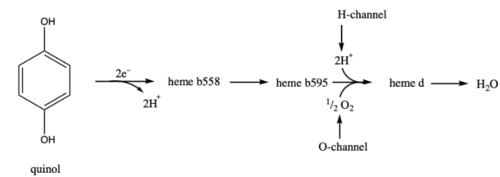
Figure 4. General mechanism of cytochrome bd-oxidase in
E. coli. Electrons are passed from quinol to heme b
558 to heme b
595 to heme d. Protons and oxygen atoms flow into the H-channel and O-channel to heme d. Heme d catalyzes the reduction of oxygen to water.
Structure Similarity between "bd" oxidases from G. thermodenitrificans and E. coli
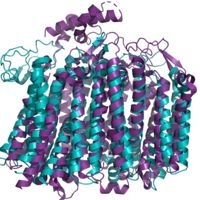
Figure 5. Alignment of bd oxidases from
G. thermodenitrificans (PDB:
5doq) shown in
blue and
E. coli (PDB:
6rko) shown in
purple.
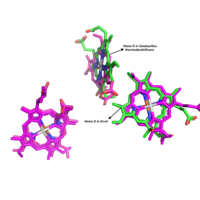
Figure 6. Heme arrangements for the organisms
G. thermodenitrificans and
E. coli. Heme D shown in
green; Heme B595 and Heme B558 shown in
pink The structure of bd oxidase for
G. thermodenitrificans is highly similar to the structure of
bd oxidase in E. coli, with the only major difference being the length of the Q-loop.
[8] All of the structural similarities and differences between the two proteins can be seen in the alignment of their main structures (Figure 5). Although only having one significant difference in structure, this shift in the Q-loop causes the two proteins to have different active sites (Figure 6). In particular, the are arranged differently than the . The main reason for this change in heme arrangement is because of the being located differently in
E. coli, thus causing a different active site arrangement in the protein.
[8] The O-channel does not exist in the cytochrome
bd oxidase of
Geobacillus thermodenitrificans; instead, oxygen binds directly to the active site.
[1] The subunit found in
E. coli blocks this alternate oxygen entry site, which forces oxygen to travel through the O-channel.
[2][8] The presence of an O-channel affects oxidase activity, as the
E. coli oxidase acts as a "true" oxidase, while the
G. thermodenitrificans bd oxidase contributes more to
detoxification.
[8]
Relevance
The cytochrome bd oxidase is essential for pathogenic bacteria to thrive in the human body because it enhances bacterial growth and colonization. Any alteration of the bd oxidase Cyd subunits will most likely produce a nonfunctional mutant cytochrome bd oxidase[9], which inhibits bacterial growth. If E. coli are missing or possess ineffective CydA and B subunits, bacterial growth ceases.[10] With colitis, E. coli mutants that were missing CydAB colonized more poorly when compared to the wild type levels of colonization.[10] The cytochrome bd oxidase is the main component in nitric oxide (NO) tolerance in bacteria, which is released by neutrophils and macrophages when the host is infected.[11] E. coli growth seen in urinary tract infections is mainly due to the NO resistant bd oxidase. Without the CydA and CydB subunits, bacteria could not colonize in high NO conditions[11]. Cytochrome bd oxidases are essential for life in other pathogenic bacteria such as M. tuberculosis. Deletion of the CydA and CydB subunits dramatically decreased the growth of M. tb compared to the wild type when exposed to imidazo[1,2-α]pyridine, a known inhibitor of respiratory enzymes.[12] Upregulation of the cytochrome bd oxidase Cyd genes resulted in a mutant strain of M. tb that was resistant to imidazo[1,2-α]pyridine.[12]
Since cytochrome bd oxidases are only found in prokaryotes and are required for pathogenic bacterial infections, inhibitors that target cytochrome bd oxidase are promising antibacterial agents. Compounds that target heme b558[3], create unusable forms of oxygen[13], and target the o-channel [14] have shown potential in halting bacterial growth.
3D Structures of cytochrome bd oxidase
Updated on 28-August-2025
6rko - EcCytbd subunits 1,2,X + YnhF + ubiquinone - Escherichia coli - Cryo EM
6rx4 - EcCytbd subunits 1,2,X,Y + ubiquinone - Cryo EM
5doq, 5ir6 - Cytbd subunits 1,2 + protein - Geobacillus thermodenitrificans
7d5i, 7nkz, 9fka - Cytbd – Mycobacterium tuberculosis - Cryo EM
8b4o - Cytbd – Corynebacterium glutamicum - Cryo EM
![Figure 1. Cartoon model of cytochrome bd-oxidase in E. coli. Dashed lines represent borders of cytoplasmic and periplasmic regions. A quinol bound in the periplasmic jmolSetTarget('1');jmolLink('delete $clickGreenLinkEcho; refresh;setL = \"setLoading();\"; javascript @setL; script /wiki/extensions/Proteopedia/spt/wipeFullLoadButton.spt; ~green = \"Q-loop\"; isosurface DELETE; scn = load(\"/wiki/scripts/83/832924/Q_loop/3.spt\"); scn = scn.replace(\'# initialize;\', \'# initialize;\nclearSceneScaleCmd = \"clearSceneScale();\"; javascript @clearSceneScaleCmd;\n\'); scn = scn.replace(\'_setSelectionState;\', \'_setSelectionState; message Scene_finished;\'); scn = scn.replace(\'_setState;\', \'_setState; setButtonsStartingState();\'); scn = scn.replace(\'DORESIZE\', \'\'); script inline scn;','Q-loop','Q-loop'); is oxidized and releases protons into the periplasmic space, generating a proton gradient. Protons and oxygen atoms from the cytoplasmic side enter cytochrome bd oxidase through specific channels. Oxygen is reduced to water, which is released into the cytoplasmic space. Blue = CydA; green = CydB; yellow = CydX; pink = CydS. [PDB: 6RX4]](/wiki/images/thumb/c/c9/Transmembrane_bd_ox.png/550px-Transmembrane_bd_ox.png)





![Figure 3. H and O-channels of cytochrome bd-oxidase in E. coli. Channels are outlined in gray, water is shown as spheres, and relevant amino acids are labeled above. [PDB:6RX4]](/wiki/images/thumb/8/82/O_AND_H_CHANNEL.png/300px-O_AND_H_CHANNEL.png)



